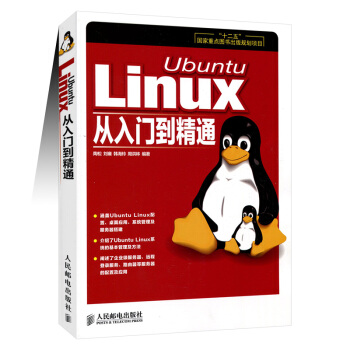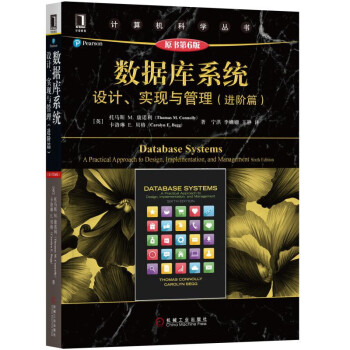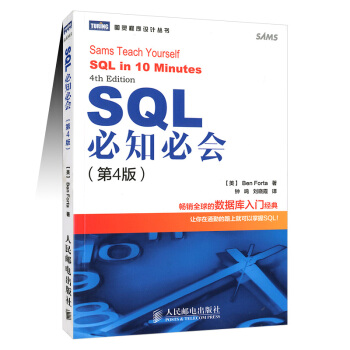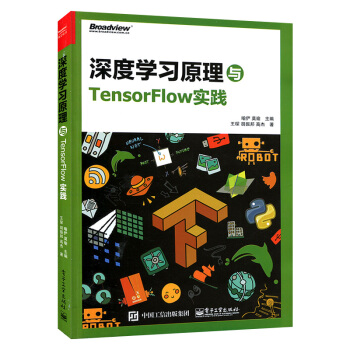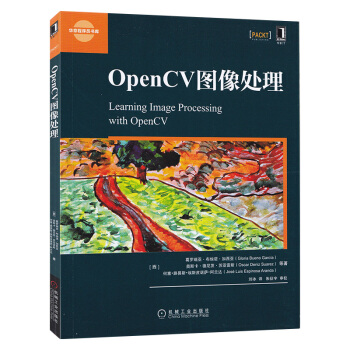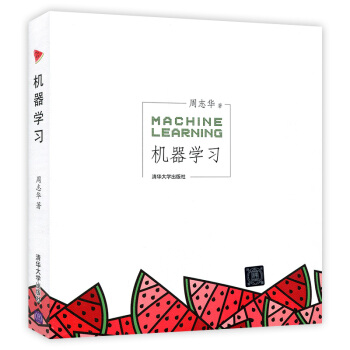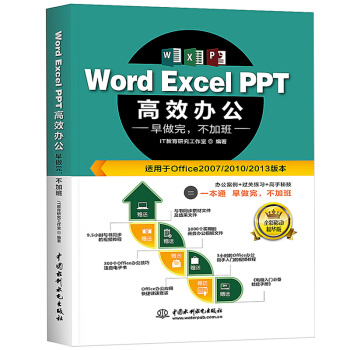

具体描述
1 introduction
1.1 language processors
1.2 the structure of a compiler
1.3 the evolution of programming languages
1.4 the science of building a compiler
1.5 applications of compiler technology
1.6 programming language basics
1.7 summary of chapter 1
1.8 references for chapter 1
2 a simple syntax-directed translator
2.1 introduction
2.2 syntax definition
2.3 syntax-directed translation
2.4 parsing
2.5 a translator for simple expressions
2.6 lexical analysis
2.7 symbol tables
2.8 intermediate code generation
2.9 summary of chapter 2
3 lexical analysis
3.1 the role of the lexical analyzer
3.2 input buffering
3.3 specification of tokens
3.4 recognition of tokens
3.5 the lexical-analyzer generator lex
3.6 finite automata
3.7 from regular expressions to automata
3.8 design of a lexical-analyzer generator
3.9 optimization of dfa-based pattern matchers
3.10 summary of chapter 3
3.11 references for chapter 3
4 syntax analysis
4.1 introduction
4.2 context-free grammars
4.3 writing a grammar
4.4 -down parsing
4.5 bottom-up parsing
4.6 introduction to lr parsing: simple lr
4.7 more powerful lr parsers
4.8 using ambiguous grammars
4.9 parser generators
4.10 summary of chapter 4
4.11 references for chapter 4
5 syntax-directed translation
5.1 syntax-directed definitions
5.2 evaluation orders for sdd's
5.3 applications of syntax-directed translation
5.4 syntax-directed translation schemes
5.5 hnplementing l-attributed sdd's
5.6 summary of chapter 5
5.7 references for chapter 5
6 intermediate-code generation
6.1 variants of syntax trees
6.2 three-address code
6.3 types and declarations
6.4 translation of expressions
6.5 type checking
6.6 control flow
6.7 backpatching
6.8 switch-statements
6.9 intermediate code for procedures
6.10 summary of chapter 6
6.11 references for chapter 6
7 run-time environments
7.1 storage organization
7.2 stack allocation of space
7.3 access to nonlocal data on the stack
7.4 heap management
7.5 introduction to garbage collection
7.6 introduction to trace-based collection
7.7 short-pause garbage collection
7.8 advanced ics in garbage collection
7.9 summary of chapter 7
7.10 references for chapter 7
8 code generation
8.1 issues m the design of a code generator
8.2 the target language
8.3 addresses in the target code
8.4 basic blocks and flow graphs
8.5 optimization of basic blocks
8.6 a simple code generator
8.7 peephole optimization
8.8 register allocation and assignment
8.9 instruction selection by tree rewriting
8.10 optimal code generation for expressions
8.11 dynamic programming code-generation
8.12 summary of chapter 8
8.13 references for chapter 8
9 machine-independent optimizations
9.1 the principal sources of optimization
9.2 introduction to data-flow analysis
9.3 foundations of data-flow analysis
9.4 constant propagation
9.5 partial-redundancy elimination
9.6 loops in flow graphs
9.7 region-based analysis
9.8 symbolic analysis
9.9 summary of chapter 9
9.10 references for chapter 9
10 instruction-level parallelism
10.1 processor architectures
10.2 code-scheduling constraints
10.3 basic-block scheduling
10.4 global code scheduling
10.5 software pipelining
10.6 summary of chapter 10
10.7 references for chapter 10
11 optimizing for parallelism and locality
11.1 basic concepts
11.2 matrix multiply: an in-depth example
11.3 iteration spaces
11.4 aftlne array indexes
11.5 data reuse
11.6 array data-dependence analysis
11.7 finding synchronization-free parallelism
11.8 synchronization between parallel loops
11.9 pipelining
11.10 locality optimizations
11.11 other uses of affine transforms
11.12 summarv of chapter 11
11.13 references for chapter 11
12 interprocedural analysis
12.1 basic concepts
12.2 why interprocedural analysis?
用户评价
作为一名有几年从业经验的软件工程师,我一直在寻找一本能够帮助我系统性梳理和深化对编译器理解的书籍。市面上关于编程语言和开发框架的资料层出不穷,但真正能触及“编译”这个核心层面的,却相对较少。这本《编译原理(英文版.第2版)》恰好填补了这一空白。它的内容深度和广度都超出了我的预期,远不止是一本简单的“程序设计编程书籍”。书中对编译器各个阶段的剖析,尤其是对代码优化部分,简直是“点睛之笔”。现代编译器为何能将我们编写的简洁代码优化得如此高效,这本书给出了详尽的解释。例如,对于循环不变代码外提、死代码消除、常量折叠等优化技术,作者不仅给出了其背后的原理,还通过具体的例子展示了这些优化是如何实际应用的。这对于我理解和编写高性能的程序非常有启发。我常常在思考,为什么有些算法在理论上复杂度不高,但在实际运行中却不如预期,很多时候就与编译器的优化能力息息相关。这本书让我认识到,要想真正写出“好”的代码,不仅要有精巧的算法设计,还要理解代码是如何被“翻译”和“执行”的。虽然这本书的篇幅不小,阅读也需要一定的耐心和基础,但一旦你深入进去,你就会发现它为你打开了一个全新的视角,让你对软件的运行机制有了更深层次的认识。
评分作为一名在人工智能和机器学习领域工作的研究者,我对能够生成高效、优化代码的编译器技术一直很关注。这本《编译原理(英文版.第2版)》虽然标题上写着“编译器设计教材书”,但其内容对于我们理解现代深度学习框架的底层实现,以及优化神经网络模型的计算图,都具有重要的参考价值。书中关于代码优化部分,特别是针对并行计算和向量化指令的讨论,为我们理解如何让算法在特定的硬件上(如GPU)高效运行提供了理论基础。我曾遇到过一些模型推理速度瓶颈,很多时候并不是算法本身的问题,而是现有框架生成的代码未能充分利用硬件特性。阅读这本书,让我更加清晰地认识到,编译器不仅仅是简单的代码翻译器,它更是一个能够“思考”如何让程序跑得更快的智能体。书中对中间表示(IR)的设计和转换的讲解,也让我对如何构建更灵活、更易于优化的计算图有了新的思路。虽然我可能不会从头开始设计一个完整的编译器,但书中提供的原理和技术,足以让我更有针对性地去理解和改进我所使用的AI框架的性能。
评分我是一名教授编译原理课程的教师,在过去的教学中,我尝试过多种教材,但《编译原理(英文版.第2版)》是我认为最能系统地、深入地传达编译原理精髓的著作之一。这本书的优点在于其结构的完整性和内容的深度。它不仅仅是一个简单的知识罗列,而是以一种清晰的逻辑链条,将编译的各个阶段有机地连接起来。从词法分析的模式匹配,到语法分析的结构化,再到语义分析的意义赋予,直至后续的代码生成和优化,每一个环节的过渡都非常自然。书中对各种算法的讲解,如递归下降分析、LR分析、LL分析,以及各种数据流分析和控制流分析技术,都做了非常详尽的阐述,并且不回避复杂性。这对于培养学生严谨的学术思维至关重要。我尤其欣赏它在讨论代码优化时,不仅仅是列举一些常见的优化方法,还深入到这些优化方法背后的计算理论和复杂度分析。这使得学生不仅能够“做什么”,更能“为什么这么做”。虽然这本书的英文原版对一些初学者来说可能存在一定的阅读门槛,但其内容的扎实程度和理论高度,足以使其成为任何希望深入理解计算机科学核心技术的学习者或从业者的必备参考。
评分这本《编译原理(英文版.第2版)》是一本极其厚重的著作,拿到手里的那一刻,就被它严谨的排版和大量的篇幅所震撼。作为一名正在攻读计算机科学专业的学生,我深知编译原理在整个计算机科学体系中的重要性,它是连接高级语言和机器语言的桥梁,理解它,就如同掌握了计算机语言的“内功心法”。虽然这本书的标题包含了“程序设计编程书籍”的字样,但我认为它更多地是为那些希望深入理解程序如何被执行的开发者提供坚实的基础。翻开书页,首先映入眼帘的是清晰的章节划分,从词法分析、语法分析到语义分析,再到中间代码生成、代码优化和目标代码生成,每一个环节都层层递进,逻辑严密。作者在讲解每个概念时,都会辅以大量的图示和伪代码,这对于初学者来说无疑是一份极大的帮助。尤其是在语法分析部分,各种解析树、LR分析等抽象的概念,如果仅仅依靠文字描述,很容易让人云里雾里,但通过书中详细的图示和步骤拆解,即使是复杂如LR(1)分析,也变得相对容易理解。我个人非常喜欢它在讨论各种算法时的严谨性,不仅仅是给出算法的框架,更会深入到每一步的细节,并且会讨论不同算法的优劣,这对于我们选择和实现编译器技术非常有指导意义。虽然有时候会觉得它过于理论化,但正是这种深度,才让它成为一本不可多得的经典教材。
评分我是一名对编程语言底层原理非常感兴趣的业余爱好者,一直想找一本既有深度又不至于完全晦涩难懂的书籍来学习编译。这本《编译原理(英文版.第2版)》可以说是一次非常成功的探索。虽然我不是科班出身,阅读过程中也会遇到一些挑战,但书中清晰的讲解方式和丰富的例子,让我能够循序渐进地掌握其中的知识。我尤其喜欢它在介绍不同理论概念时,总会结合实际的编程场景来阐述。比如,在讲解语法分析时,作者并没有停留在抽象的文法定义上,而是花了大量篇幅介绍如何将实际的编程语言(例如,简单算术表达式、赋值语句等)映射到这些文法规则上,并通过图示来展示词法分析器如何将输入的源代码分解成一个个“标记”,然后语法分析器如何利用这些标记构建出语法树。这种“从概念到实践”的讲解方式,对于我这样的非专业读者来说,非常有帮助。它让我不再觉得编译原理是高高在上的理论,而是能够切实应用到程序设计中的强大工具。这本书为我提供了一个非常好的起点,让我能够开始思考如何去设计自己的小型解释器,或者理解现有的编程语言是如何工作的。
相关图书
本站所有内容均为互联网搜索引擎提供的公开搜索信息,本站不存储任何数据与内容,任何内容与数据均与本站无关,如有需要请联系相关搜索引擎包括但不限于百度,google,bing,sogou 等,本站所有链接都为正版商品购买链接。
© 2025 windowsfront.com All Rights Reserved. 静流书站 版权所有

